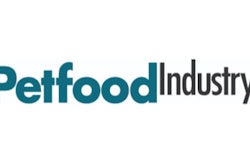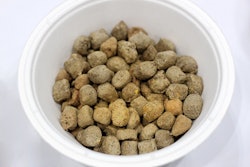
In 2019, the United States Food and Drug Administration’s (FDA) investigation into canine dilated cardiomyopathy (DCM) dominated Petfood Industry news. Along with the FDA announcement about the investigation and its repercussions, top topics included global pet food sales and high protein pet food. These articles received the most page views in 2019.
1. Do peas and potatoes really cause heart disease in dogs?
As opposed to focusing on how to make a nutritionally balanced diet, some pet foods may be pushing the boundaries of extreme nutrition in a quest to find shelf space.
2. FDA warns Hill’s that vitamin D dog food reply deficient
FDA concluded that Hill’s response did “not address the root cause of this incident.”
3. Blog: Pet food protein: How much is too much?
Debbie Phillips-Donaldson: The current pet food trend of pushing protein levels ever higher may not be sustainable, for a variety of reasons, and research is lacking to understand the long-term effects on dog and cat health.
4. Blog: ‘BEG’ pet food does not equal DCM
Ryan Yamka: While certain people may believe they know the root cause of recent cases, the reality is that no link or diet type has been proven to cause DCM in dogs.
5. North American pet ownership demographics shifting
North American pet owner demographics continue to shift, which is creating new challenges for dog and cat food brands in a competitive marketplace.
6. Blog: Update: FDA pet food ingredient and DCM investigation
Debbie Phillips-Donaldson: On July 12, the Food and Drug Administration (FDA) issued an advisory alerting U.S. pet food companies, veterinarians, retailers and the public that it was investigating a recent outbreak of atypical cases of canine dilated cardiomyopathy (DCM) with a possible link to pet food ingredients used in popular grain-free and similar products.
7. Blog: ‘BEG’ pet food and DCM, part 2: Is veterinary bias at play?
Ryan Yamka: This article takes a deeper dive into the Food and Drug Administration (FDA) investigation update on DCM released in June 2019, pet foods known as BEG (boutique, exotic ingredients and grain-free diets) and how veterinary bias may be impacting the messaging to consumers.
8. Blog: Fake news: Petco drops pet food with artificial ingredients
Ryan Yamka: Petco is only removing some artificial ingredients, not all. Ingredients not included on the “banned” list include sodium acid pyrophosphate, sodium tripolyphosphate and potassium sorbate, to name a few.
9. Global pet food sales hit $91 billion in 2018
The highest growth rates for pet food are in treats, Asia Pacific and online, according to Euromonitor.
10. Pet food brands named by FDA in DCM alert see sales loss
The 16 pet food brands prominently named in FDA’s June 2019 alert are experiencing declining sales, Nielsen data shows.

















